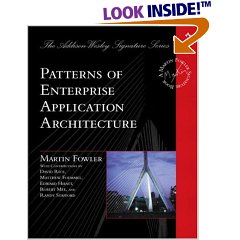The Three Kinds of Application Code
 In a desperate attempt to grasp for grand unified theories in the fractured, unstable world of information technology, this is a look at “code.” Here is an attempt to classify or categorize application code into three kinds. It is supposed to make my job easier when the build is presented to me and my thoughts measure what’s in front of me. These three generalities become the instruments to use for such measurement:
In a desperate attempt to grasp for grand unified theories in the fractured, unstable world of information technology, this is a look at “code.” Here is an attempt to classify or categorize application code into three kinds. It is supposed to make my job easier when the build is presented to me and my thoughts measure what’s in front of me. These three generalities become the instruments to use for such measurement:
Generic Application Code
This is code that defines entities that you call with parameters of the data types of the Application and the data types of the platform. In my experience, generic application code is called upon. It rarely does the calling. This calling is like going to the library and looking something up. When you leave the library you are transformed. This is probably why we may say such generic code resides in “libraries.”
Partially Generic Application Code with Conventions
This is would-be generic code that crosses a boundary to call upon data or other code through an interface. When it crosses the boundary, it does so with certain assumptions about where things are on the other side. These assumptions are the conventions. Ruby on Rails is famous in part for its use of conventions.
‘Crossing a boundary’ may sound confusing but it’s just another way of saying connecting to a database or opening a file.
Plain Old Application Code
An Excel macro is plain-old application code. When programmers get accused of writing “too much code” they are probably writing plain old application code. Plain old application code is the application. This is an expression of intent to manipulate particular sets of data in a particular environment or platform.
How these Three Work Together
The Partially Generic Application Code with Conventions begins in a particular environment or platform with one or more references to Generic Application Code. The Partially Generic Application Code with Conventions then crosses a boundary to load Plain Old Application Code.
The Plain Old Application Code is the application. And you may see how all of these notes are heavily influenced by OOP, interface-based programming and the concept of the application server.
